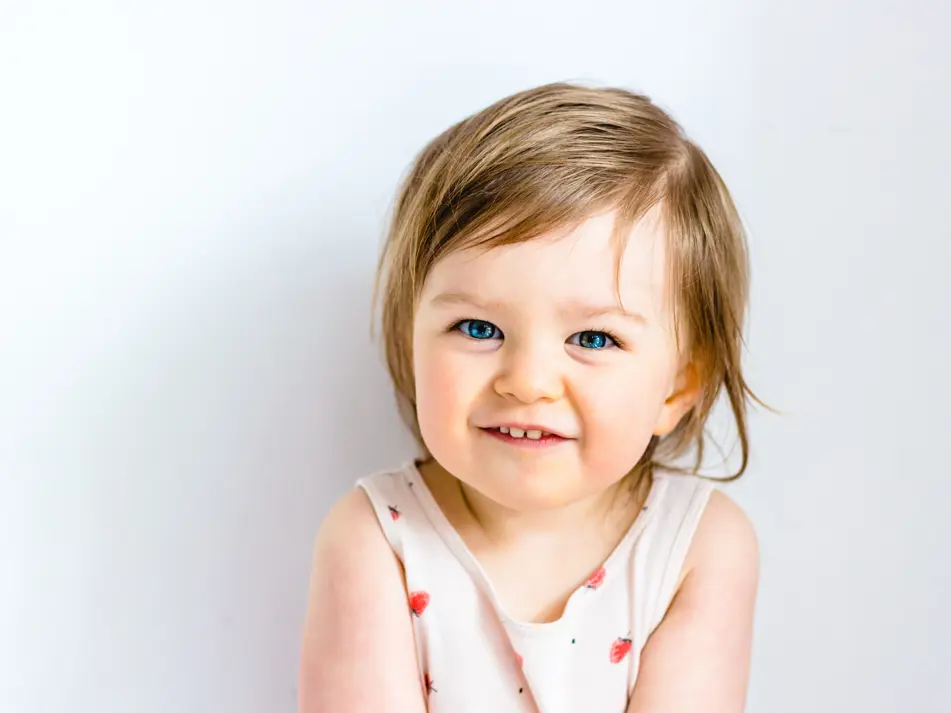Toddler Behaviour

On this page
The toddler years from age 1 to 3 is an incredible part of life. They're learning to walk, talk and their whole world is booming with exploration and curiosity.
A lot of people talk about toddler tantrums and the terrible twos but it's not always tantrums. They're often learning how to regulate their emotions. They need you as their secure base and to show steady hands to keep them secure.
Family values and culture will be a discussion point for you and your family as you navigate what is important in terms of behaviour and response to behaviour and what isn’t important, within and outside of your home. Make time to discuss this with your partner and other family members at a calm and relaxed time, and determine what your set of family values is.
Toddler development
At this age, your child may be showing more interest in playing games, especially ones that seem repetitive. They're more interested in other children but the concept of sharing is only just developing.
They love to spend time with their parents and you can help them by giving them the opportunity to explore their world in a safe way. You can take them to the park, local playgrounds and just let them hang out with you. Even just doing the grocery shopping can be an experience for them. You can talk to them about what you're doing and why you're buying certain things.
The ability to feed or dress themself is increasing, and they're starting to let you know their likes and dislikes. A sense of independence is developing and you may start hearing the words ‘I can do it myself’!
Children can have a range of feelings and emotions in a short space of time and don’t fully understand what they are feeling, (the younger the child, the harder it is for them to know their feelings). Your child’s self-awareness and independence and ability to control their environment is easily threatened.
They may not have the words yet to express their feelings and needs and get frustrated or even angry. When you recognise and empathise with your child’s experience, it can help them contain their emotions and impulses.
Toddler behaviour management
Children need clear messages about what behaviours are acceptable and which aren't.
Talk to your child about what you want them to do rather than not do thinking about the values that are important to your family and why. For example, you could say: ‘We walk in the house so we don’t hurt ourselves or break anything. We use a nice quiet speaking voice so our house is nice and calm and we don’t wake up your baby sister’, instead of ‘Do not run, do not shout’!
When giving instructions and choices, offer two good options such as 'would you like the blue or the green toy'. This promotes a win-win situation for your child who feels good about making a decision and helps to increase their self-esteem and sense of self-worth.
Gain the child’s attention using eye contact (this may mean getting down closer to their level), remain calm, use gentle firmness and providing clear simple instructions and reason. For example `I would like you to take your shoes off now please so the dirt stays outside the house’.
The terrible twos
The terrible twos often are because your child can't communicate very well yet but is experiencing a desire for more independence. You can help understand how they're feeling by watching their facial expressions and learning their different cries.
Remain calm, use gentle firmness and providing clear instructions and your child is more likely to be cooperative.
It's also important to set clear limits to keep your child safe and help them feel secure. You also need to provide guidance to help your child maintain those limits.
How to promote positive behaviours
-
1
Predictable routines: Creating a predictable and organised home environment helps your child feel secure.
-
2
Model desired behaviour: Children are natural copycats and learn by copying behaviour. Children learn how to interact with other people and develop their social skills by watching how their parents interact and speak to each other and other people.
-
3
Descriptive praise: The key to encouraging desirable behaviour is to give children lots of positive attention and praise when they are behaving appropriately. Parents that describe what they see, hear and feel enables their child to understand what their parent is praising.
For example: I liked the way you were quietly playing when mummy was talking on the phone.
-
4
Use distraction techniques when your child is likely to respond in a challenging way to a situation. Distraction can range from pulling a funny face, removing your child from a situation, providing a game or book for them to do or redirecting them to do something else.
How to deal with challenging toddler moments
Try to understand your child in terms of what your child is feeling and thinking, not in terms of what they're doing. Your child’s emotions can be intense from being over excited to feelings of anger or disappointment. Negative emotions such as anger or disappointment are real and painful for your child.
Respond to your child quickly with empathy, attention, a hug or a change of activity. By responding, you can help your toddler regulate their emotions. When your child feels heard and understood, in time they will learn to manage difficult moments on their own.
Change your child’s world rather than trying to change the child. To help your child feel special and loved, show them affection and tell them often. This will help your child develop a healthy self-esteem and the confidence to explore and attempt new skills.
FAQs about toddler behaviour
Toddlers may use physical aggression to express their emotions. Helping your toddler find the words to express these emotions should in time overcome their use of aggression. Consider these questions:
- Where is the aggression occurring, and to who?
- What is the response?
- Is the response with aggression?
- Is it directed at everyone or just certain people?
- What is their response to the aggression?
- When does the aggression occur, and are there any early warning signs prior to the aggressive incident?
Helping your toddler with putting words to the emotion should start to change the behaviour. Identifying triggers, or intervening early when you observe the aggression begin to escalate is important in changing the behaviour.
If these strategies aren’t working, consider taking your child to the child and family health nurse, GP or paediatrician for a developmental screening assessment, to see whether there is another reason for the behaviour requiring specialist support.
It is developmentally normal for children to feel fear with strangers. Respect your child’s feelings by staying with them and not leaving them alone in their discomfort.
Talk to your toddler afterwards, if able, to see if there is a reason they screamed. If your toddler is unable to communicate their feelings, talk to them about the person, and your own feelings of comfort about the person.
Role model introductions, but don’t push them to respond the same way that you do when meeting new people.
Give your child opportunities to meet strangers in an environment they feel comfortable in, such as introducing them to other parents or children in the local park playing on the equipment.
Remember that it is developmentally normal for children to fear strangers until around 2 years of age.
This will be different for each child, but generally when verbal communication increases, the behaviour begins to subside. This is because you're able to explain and rationalise with your child, and they're able to verbalise their feelings.






































